- Back to Home »
- Best toys of the 20th century
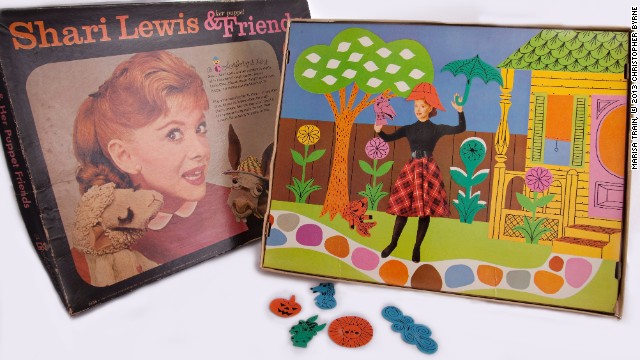 Christopher Byrne's "Toy Time" is a crowdsourced collection of the most beloved toys of the 20th century. The book examines the timeless appeal of toys like Colorforms, which allowed children to create scenes using vinyl stickers that could be moved around. "The appeal of Colorforms was that they allowed any kid to become an artist," Byrne says in the book. They were also among the first toys to be advertised on television, spurring demand.
Christopher Byrne's "Toy Time" is a crowdsourced collection of the most beloved toys of the 20th century. The book examines the timeless appeal of toys like Colorforms, which allowed children to create scenes using vinyl stickers that could be moved around. "The appeal of Colorforms was that they allowed any kid to become an artist," Byrne says in the book. They were also among the first toys to be advertised on television, spurring demand. 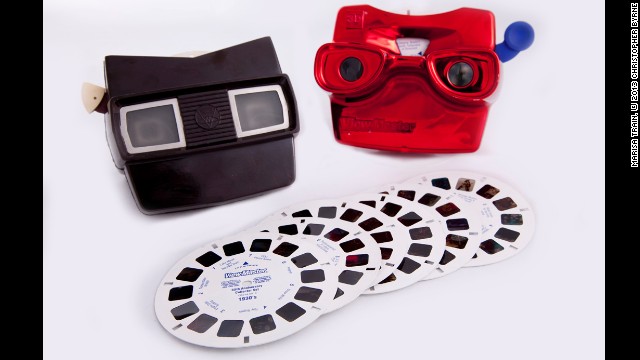 Did you know that the first View-Master was introduced at the 1939-40 New York World's Fair? Like its ancestor the stereopticon, which allowed people to view 3-D pictures of faraway places, the View-Master was originally intended for viewing images of exotic locations and travel postcards, according to "Toy Time." It took off as a toy for children in the 1950s and is still marketed to toddlers.
Did you know that the first View-Master was introduced at the 1939-40 New York World's Fair? Like its ancestor the stereopticon, which allowed people to view 3-D pictures of faraway places, the View-Master was originally intended for viewing images of exotic locations and travel postcards, according to "Toy Time." It took off as a toy for children in the 1950s and is still marketed to toddlers.  The Spirograph is one of those toys that reflected the broader culture of its time, Byrne says, combining the "space-race obsession with math and science" with the "counterculture's fascination with optical art and the psychedelic." Children loved it because even though mechanical drawing tools had been around for decades, the Spirograph was the first to be marketed as a toy, Byrne said.
The Spirograph is one of those toys that reflected the broader culture of its time, Byrne says, combining the "space-race obsession with math and science" with the "counterculture's fascination with optical art and the psychedelic." Children loved it because even though mechanical drawing tools had been around for decades, the Spirograph was the first to be marketed as a toy, Byrne said. 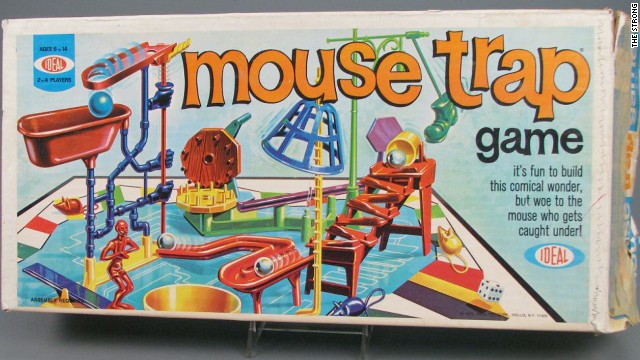 The fact that the board game Mouse Trap is still sold today, four decades after its launch, speaks to its timeless appeal, Byrne says. Inspired by the zany contraptions featured in Rube Goldberg's "Inventions" cartoons, the goal was to keep your mouse out of the trap, but the fun was in building a trap that worked, Byrne writes in "Toy Time." Ultimately, what made it so appealing was its zaniness and unpredictability, inspiring a "golden age" of skill-and-action games.
The fact that the board game Mouse Trap is still sold today, four decades after its launch, speaks to its timeless appeal, Byrne says. Inspired by the zany contraptions featured in Rube Goldberg's "Inventions" cartoons, the goal was to keep your mouse out of the trap, but the fun was in building a trap that worked, Byrne writes in "Toy Time." Ultimately, what made it so appealing was its zaniness and unpredictability, inspiring a "golden age" of skill-and-action games. 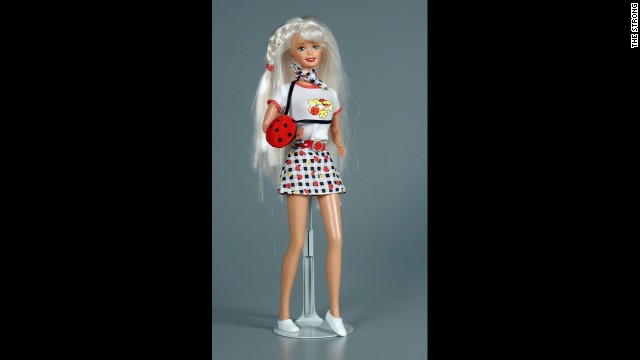 Barbie has donned countless outfits and personalities since she came on the scene in 1959 as the first-ever three-dimensional fashion doll, regarded alternately as a symbol of empowerment and a model of "pernicious gender stereotypes," Byrne says. Indeed, her history is defined by this tension between "the joy she has brought to millions and the controversy she has courted," he writes in "Toy Time."
Barbie has donned countless outfits and personalities since she came on the scene in 1959 as the first-ever three-dimensional fashion doll, regarded alternately as a symbol of empowerment and a model of "pernicious gender stereotypes," Byrne says. Indeed, her history is defined by this tension between "the joy she has brought to millions and the controversy she has courted," he writes in "Toy Time."  Parents loved the Big Wheel because it was cheaper and seemingly safer than a traditional tricycle, Byrne says. Kids loved the sound of the hollow wheel hitting the pavement as they rolled around their neighborhoods in the low-slung seat. The Big Wheel was so popular that it didn't take long for imitators to flood the market shortly after its 1969 debut, leading Marx, the company that created the original Big Wheel, to declare bankruptcy, according to "Toy Time."
Parents loved the Big Wheel because it was cheaper and seemingly safer than a traditional tricycle, Byrne says. Kids loved the sound of the hollow wheel hitting the pavement as they rolled around their neighborhoods in the low-slung seat. The Big Wheel was so popular that it didn't take long for imitators to flood the market shortly after its 1969 debut, leading Marx, the company that created the original Big Wheel, to declare bankruptcy, according to "Toy Time."  Fashion Plates is another example of a toy that reflected broader cultural trends, with fashion designers in the 1970s becoming household names, Byrne writes in "Toy Time." It also tapped into a common trend in arts and crafts toys that allowed children "who might not be gifted artists to create a professional-looking result," Byrne writes.
Fashion Plates is another example of a toy that reflected broader cultural trends, with fashion designers in the 1970s becoming household names, Byrne writes in "Toy Time." It also tapped into a common trend in arts and crafts toys that allowed children "who might not be gifted artists to create a professional-looking result," Byrne writes. 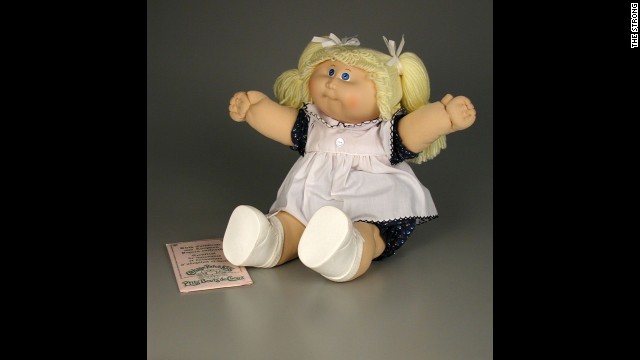 Sure, the Cabbage Patch Kids were cute. But, by putting them up for adoption from Babyland General Hospital instead of simply selling them, doll maker Xavier Roberts created an insatiable appetite for these baby dolls. Even toy maker Coleco couldn't keep up with demand after it bought the rights in 1983 and began mass-production, leading to empty store shelves and even fights among desperate parents, Byrne says.
Sure, the Cabbage Patch Kids were cute. But, by putting them up for adoption from Babyland General Hospital instead of simply selling them, doll maker Xavier Roberts created an insatiable appetite for these baby dolls. Even toy maker Coleco couldn't keep up with demand after it bought the rights in 1983 and began mass-production, leading to empty store shelves and even fights among desperate parents, Byrne says. 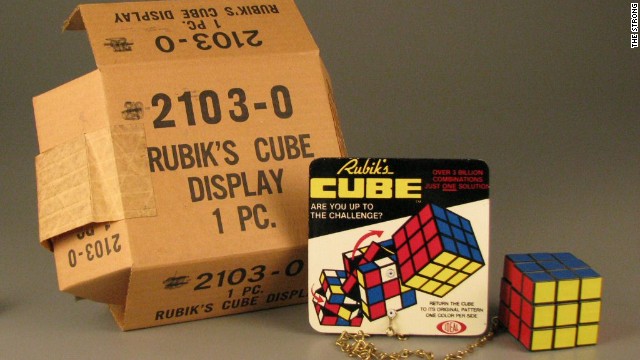 "In the 1980s, there were few greater presumed indicators of intelligence than the speed with which one could solve the Rubik's Cube," Byrne writes in "Toy Time." Named for its creator, Hungarian Erno Rubik, the cube was the first puzzle that stayed in place while it was being solved, and few were able to resist the challenge. It became a global phenomenon after debuting in the United States in 1980, selling more than a million units in that year alone.
"In the 1980s, there were few greater presumed indicators of intelligence than the speed with which one could solve the Rubik's Cube," Byrne writes in "Toy Time." Named for its creator, Hungarian Erno Rubik, the cube was the first puzzle that stayed in place while it was being solved, and few were able to resist the challenge. It became a global phenomenon after debuting in the United States in 1980, selling more than a million units in that year alone. 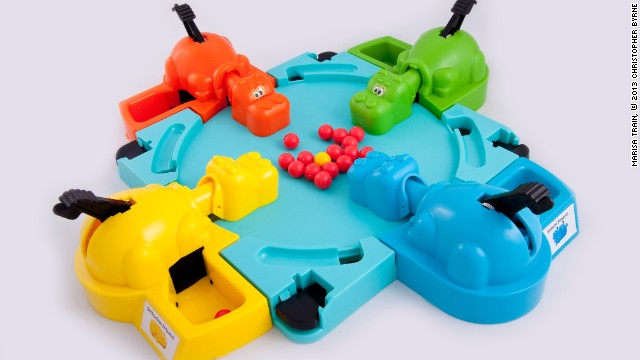 There was more to Hungry Hungry Hippos than noise and chaos, Byrne says. "Smart kids knew that there was a strategy to this game," he said. "The name of the game was controlled whacking."
There was more to Hungry Hungry Hippos than noise and chaos, Byrne says. "Smart kids knew that there was a strategy to this game," he said. "The name of the game was controlled whacking." 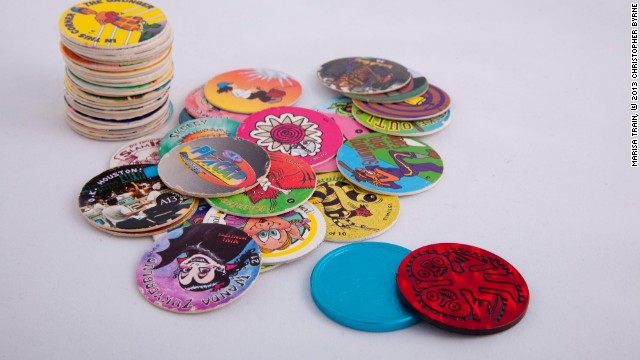 POGs started in Hawaii as seals for glass bottles of passion fruit-orange-guava juice (hence the name) and became a novelty item among kids who turned them into games and collectibles. When the craze spread to the mainland United States, it didn't last long, thanks to school bans. But for a while, everyone had POGs, and POGS were used to promote just about everything, from movies and sports to substance abuse campaigns, fueling the craze, Byrne says.
POGs started in Hawaii as seals for glass bottles of passion fruit-orange-guava juice (hence the name) and became a novelty item among kids who turned them into games and collectibles. When the craze spread to the mainland United States, it didn't last long, thanks to school bans. But for a while, everyone had POGs, and POGS were used to promote just about everything, from movies and sports to substance abuse campaigns, fueling the craze, Byrne says. 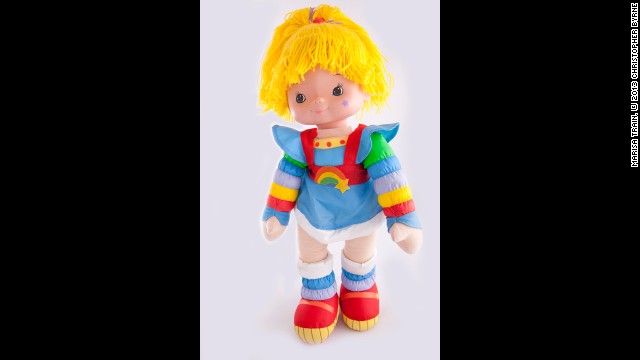 Rainbow Brite was part of the colorful "cavalcade of cuteness" that ushered in the 1980s, along with Care Bears and Strawberry Shortcake, Byrne says. She proved to have less staying power than the rest.
Rainbow Brite was part of the colorful "cavalcade of cuteness" that ushered in the 1980s, along with Care Bears and Strawberry Shortcake, Byrne says. She proved to have less staying power than the rest. 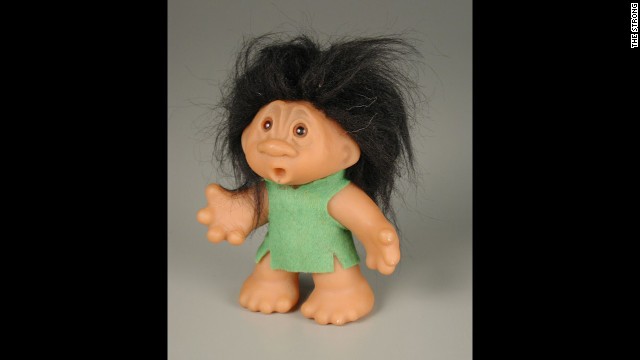 One of the first toys to cross gender lines, trolls were an instant hit when they debuted in the United States in the 1980s, years after Danish craftsman Thomas Dam created the first iteration in 1959. Like Barbie, these homely creatures assumed many personalities, from leprechaun and Rastafarian to our personal favorite, rainbow hair. They appeared on TV shows and in movies, winning over a generation perhaps eager for a "respite from the saccharine sweetness of the Care Bears and Strawberry Shortcake," Byrne writes in "Toy Time."
One of the first toys to cross gender lines, trolls were an instant hit when they debuted in the United States in the 1980s, years after Danish craftsman Thomas Dam created the first iteration in 1959. Like Barbie, these homely creatures assumed many personalities, from leprechaun and Rastafarian to our personal favorite, rainbow hair. They appeared on TV shows and in movies, winning over a generation perhaps eager for a "respite from the saccharine sweetness of the Care Bears and Strawberry Shortcake," Byrne writes in "Toy Time." 
1

2

3

4

5

6

7

8

9

10

11

12

13
- New book "Toy Time" looks back at memorable toys of the 20th century
- The crowd-sourced list includes toys such as View-Master and Nok Hockey
- More recent selections include POGS and Trolls
Editor's note: What's your favorite childhood toy? Share your memories in the comments or on CNN Living's Facebook page.
(CNN) -- Most of us have a favorite toy from childhood that still has the power to make us smile, whether it's a Barbie doll, a Micro Machine or the board game Operation.
What makes them memorable is the subject of a new book, "Toy Time! From Hula Hoops to He-Man to Hungry Hungry Hippos," a collection of some of the most beloved toys of the 20th century.
Author Christopher Byrne crowd-sourced the compilation from readers of the popular website TimetoPlayMag.com and came up with more than 100 beloved toys. The book includes not just the most popular choices, such as Big Wheels and the Etch a Sketch, but also those that prompted the most compelling memories, serving as "a catalyst for the imagination," Byrne said.
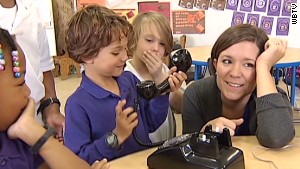 Kids on devices: What's this old thing?
Kids on devices: What's this old thing? Most of our favorite toys came into our lives when we were developing our identity and figuring out the world, he said. Some, like the rampaging dinosaur King Zor (1962), have faded from the cultural landscape, while others, like View-Master and Nok Hockey (which both hit the mass market in the 1940s), have been passed down through generations.
The toys that stick with us are those that allowed us to explore new worlds and create experiences.
"Ultimately, play is something that happens in the imagination," said Byrne, content director of TimetoPlayMag.com. "What makes each Barbie doll unique is how a little girl creates and projects her sense of self and her fantasies onto that piece of plastic."
Other toys create strong memories simply because of their nostalgic appeal.
"Some, just by looking at them, reflect the design sensibility of the time, becoming almost works of art," he said. "We identify with them in the cultural context of their time."
So, how can you tell if a toy will be a hit for your child? When it comes to gift-giving for children, the most important rule of thumb is to know who you're shopping for, Byrne said.
"The hot toys are only hot if they're hot for your child," he said. "The toys that become memorable are the ones that connect with our interests."







